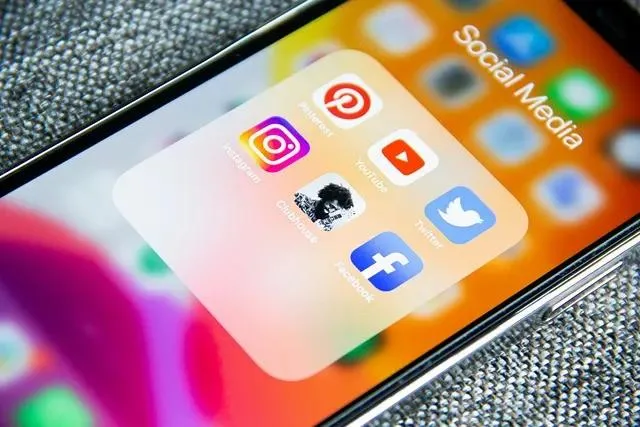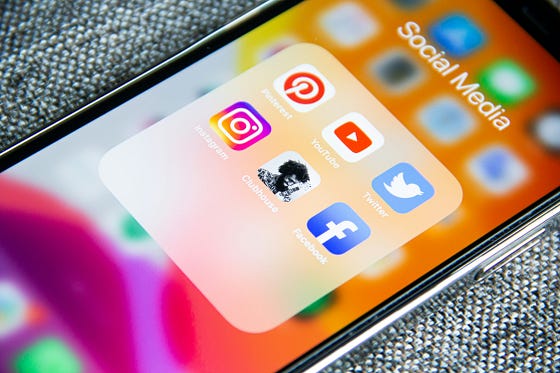
What is Omni-Channel Marketing? Definition, Tips and Examples
Omni-channel marketing is the integration and cooperation of the various channels organizations use to interact with consumers, with the goal of creating a consistent brand experience. This includes physical (e.g. stores) and digital channels (e.g. websites).
The goal of an omni-channel marketing strategy is to create a convenient, seamless user experience for consumers that offers many opportunities for fulfillment. An omni-channel strategy may give consumers the chance to find and purchase online, in-store, or a combination thereof — such as “buy online and pick up in-store”. Today, organizations across industries are leveraging omni channel strategies, including healthcare, retail, finance, technology, and more.

What is Omni-Channel Marketing?
Are you looking for a way to improve your customer experience? Omni-channel marketing might be the answer.
Omni-channel marketing is the seamless integration of branding, messaging, and online and offline touchpoints as consumers move down the sales funnel, enabling a more impactful customer experience.
With an omni-channel approach, you can offer your customers a consistent, positive experience on every channel, by providing consistent branding, personalized messaging, and content that is informed by past interactions and the current stage of the buyer’s journey.
Omni-channel marketing takes a consumer-centric view of marketing tactics. Consumers can now interact with brands on innumerable channels, from social media to customer service hotlines. An omnichannel approach ensures that the consumer has a positive, consistent experience on each channel, by offering a few key elements:
Consistent, identifiable brand tone and vision
Personalized messaging based on specific interests
Content that is informed by past interactions and current stage of the buyer’s journey
An identifiable brand simplifies brand recognition, while personalization based on interests and shopping history makes consumers more likely to interact with branded content across channels.
What’s the Difference Between Multichannel vs. Omnichannel?
Do you ever feel like you’re interacting with different brands when you switch between devices or channels? You’re not alone. It can be really frustrating when your experience on one channel isn’t reflected on another. That’s because most companies still operate using a multichannel approach to marketing. But that’s changing.
In order to meet the needs and expectations of today’s consumers, companies are increasingly adopting an omni-channel strategy. Omni-channel creates a consistent experience for customers no matter how or where they interact with a brand. And it has the potential to create some serious competitive advantages for those who implement it effectively.
There are a few key differences between multichannel and omni-channel that are important to understand. Here’s a quick overview:
MULTICHANNEL:
is focused on individual channels and transactions.
is channel-specific.
is siloed.
is reactive.
OMNICHANNEL:
is focused on the customer journey and experience.
is customer-centric.
is integrated.
is proactive.
In a nutshell, multichannel marketing focuses on individual channels and transactions, while omni-channel marketing focuses on the customer journey and experience.
The Benefits of Using an Omni-Channel Approach
Are you looking for ways to improve your customer experience (CX)? An omni-channel approach may be the answer.
Omni-channel strategy requires a customer-centric view
It’s important to remember that an omni-channel strategy starts with the customer, not the channels. Although it can be tempting to focus on the latest and greatest channel, if it doesn’t serve your customer’s needs, it’s not worth your time and effort.
Think about how your customers want to interact with your brand and what you can do to make that experience as seamless as possible. Do they want to be able to purchase items in-store and return them online? Or book an appointment online and then come into the store to speak with someone?
Your omnichannel strategy should be designed to meet the needs of your customers and make their lives as easy as possible. By keeping the customer at the center of your strategy, you can create an experience that is truly omni-channel.
Building a cohesive brand strategy
An important part of an omni-channel strategy is creating a cohesive brand strategy that can be carried across all channels. This means having a clear understanding of your brand identity and making sure that everything you do is in line with that identity.
Start by defining your core audience and what they need and value from your brand. Once you have a clear understanding of your target customer, you can start to build out your brand strategy. This should include everything from your brand voice to your visuals and messaging.
By having a cohesive brand strategy, you can ensure that your omnichannel approach is truly targeted and relevant to your audience.
Focusing on the overall experience
When customers interact with your brand, they should have a consistent experience no matter what channel they’re using. This means that your brand strategy needs to be designed with the customer journey in mind.
Think about how you want customers to interact with your brand and what you can do to make that experience as seamless as possible. Do they want to be able to purchase items in-store and return them online? Or book an appointment online and then come into the store to speak with someone?
Your omni-channel strategy should be designed to meet the needs of your customers and make their lives as easy as possible. By keeping the customer at the center of your strategy, you can create an experience that is truly omni-channel.
Improving data attribution
Another important benefit of an omni-channel approach is improved data attribution. With an omni-channel strategy, brands are able to track engagements across all channels and get a better understanding of what the customer journey looks like. This data can then be used to improve future campaigns and optimize media spend.
If you’re looking to improve your customer experience, an omni-channel approach is a great way to start. By focusing on the customer and creating a cohesive brand strategy across channels, you can increase revenue and build loyalty. And with better data attribution, you can optimize your campaigns for even better results.
What is Omni-Channel Attribution?
In a world where there are now multiple touch points across channels, which should get credit for the conversion? That can be difficult for marketers to answer, without the appropriate attribution model in place. Marketers often rely on multi-touch attribution and media mix modeling (MMM) to understand what led to a conversion, however, these models are not perfect.
MMM: Media Mix Modeling only looks at long-term aggregate data, rather than person-level insights. While this allows marketers to see the impact a campaign had on conversions, as well as historical trends, such as times of year when shoppers increase or decrease engagements, it does not provide insight into individual preferences. MMM also uses several year’s worth of data, meaning teams cannot use this model to optimize campaigns in real-time.
MTA: Multi-touch attribution offers granular, person-level data in real-time across each touchpoint. When analyzed, teams can use this data to make changes to campaigns as they run, to better cater to consumer needs. The challenge with multi-touch attribution is that it is difficult to determine how much credit each touchpoint should be given for a conversion. For example, was the webinar or the email campaign more influential in moving the consumer toward conversion?
Attribution models no longer have to rely on outdated practices and can now give a more holistic view of the marketing funnel and the buyer’s journey. Just as omni-channel tactics combine online and offline channels, omni-channel attribution removes silos between campaign measurements to understand the role each touchpoint played in the journey.
Leveraging omni-channel attribution offers a host of benefits to brands, allowing them to correlate online and offline measurements, and gain visibility into both person-level insights and aggregate, historical shopper trends.
Do you ever feel like your marketing campaigns just aren’t working the way they used to? You’re not alone. In a world where there are now multiple touch points across channels, it can be difficult to determine which should get credit for the conversion. That’s where attribution models come in.
Leveraging omni-channel attribution offers a host of benefits to brands, allowing them to correlate online and offline measurements, and gain visibility into both person-level insights and aggregate, historical shopper trends.
Omni-Channel Attribution vs. Multi-Touch Attribution
Omni-channel attribution is a relatively new concept, and one that is often confused with multi-touch attribution. So, what’s the difference?
Multi-touch attribution assigns credit to each touchpoint in the buyer’s journey, whereas omni-channel attribution looks at the buyer’s journey as a whole. With omni-channel attribution, marketers are able to see the interactions across channels and devices that led to a conversion, and can attribute value to each touchpoint.
Omni-channel attribution also offers person-level data, rather than aggregate data, so teams can understand how an individual shopper interacts with their brand. This is valuable information that can be used to optimize campaigns in real-time and better cater to the needs of the consumer.
The Benefits of Omni-Channel Attribution
There are many benefits to using omni-channel attribution, which is why it is quickly becoming the preferred method for marketers. Some of the most notable benefits include:
• Gaining a holistic view of the buyer’s journey: With omni-channel attribution, marketers are no longer limited to siloed data sets. This allows for a more complete understanding of the buyer’s journey and how each touchpoint influences conversion.
• Improving campaign optimization: Having visibility into all customer interactions gives marketers the ability to make changes to campaigns in real-time. This is valuable information that can be used to improve the efficacy of campaigns and better meet the needs of the consumer.
• Driving more conversions: By understanding the buyer’s journey, marketers can identify areas where conversion rates are low and make necessary changes. This results in more conversions and a higher ROI for campaigns.
• Increasing customer lifetime value: By understanding the preferences of individual customers, marketers can create more personalized experiences that result in increased customer loyalty and lifetime value.
Implementing Omni-Channel Attribution
Interested in implementing omni-channel attribution for your brand? Here are a few tips to get started:
1. Start with the customer in mind: The first step is to understand your customer and their journey. This will help you determine which channels and touch points are most important to them.
2. Collect data from all channels: Once you have a good understanding of the buyer’s journey, you can start collecting data from all channels. This data will be essential for understanding how customers interact with your brand.
3. Integrate data across channels: Once you have collected data from all channels, you need to integrate it into a single platform. This will allow you to see the customer journey as a whole and make necessary changes to improve campaign optimization.
4. Make changes to campaigns in real-time: The final step is to make changes to your campaigns in real-time based on the data you have collected. This will ensure that your campaigns are always aligned with the needs of the customer.
Omni-channel attribution is quickly becoming the preferred method for marketers. By understanding the customer journey and collecting data from all channels, marketers can improve campaign optimization and drive more conversions. Implementing these changes will result in increased customer loyalty and lifetime value.
Steps for Leveraging Omni-Channel Marketing
Omni-channel marketing is a term for the current trend of marketing that uses multiple channels to interact with customers.
This type of marketing takes into account how the individual interacts with your brand, and focuses not on the channel, but on the experience as a whole.
There are a few essentials when it comes to creating an omni-channel strategy:
1. Data Collection
2. Data Analysis
3. Customer Journey Mapping
4. Brand Guidelines
5. Testing / Optimization
If you want to create an omni-channel strategy that works, you need to make sure you have these five essentials in place. Without them, you’ll likely end up with a disjointed customer experience that frustrates potential buyers and ultimately hurts your bottom line.
The first essential for any omni-channel strategy is data collection. You need to have a way to collect data from all of the different channels that your customers are using. This includes both online and offline channels. A smart way to do this is with Unified Marketing Measurement (UMM), an attribution model that combines the person-level metrics of multi-touch attribution, with the historic, aggregate measurements of media mix modeling. UMM provides marketers with a holistic view of how each interaction along the customer journey contributes to business outcomes, and can be used to optimize campaigns in near-real-time.
Once you have your data collection system in place, the next essential is data analysis. You need to be able to make sense of all the data you’re collecting, in order to understand what’s working and what’s not. This is where marketing mix modeling (MMM) comes in. MMM is a statistical technique that can be used to determine the most effective combination of marketing channels and activities for a given business goal. By using MMM, you can optimize your omni-channel strategy for maximum impact.
The third essential for any omni-channel strategy is customer journey mapping. This is a process of identifying all the touchpoints that a customer has with your brand, from awareness to purchase. Journey mapping allows you to see the entire customer experience, and identify areas where you can improve the customer experience and increase conversion rates.
The fourth essential for an omni-channel strategy is developing brand guidelines. In order to deliver a consistent message across all channels, you need to have clear guidelines for your branding. This includes your messaging, tone, and overall creative direction. Brand guidelines help to ensure that your team is always on the same page, and that your customers can easily recognize your brand no matter where they encounter it.
The fifth and final essential for an omni-channel strategy is continuous testing and optimization. As your omni-channel approach evolves, it’s important to continuously test its efficacy and optimize accordingly. This includes testing different messaging, creatives, and media mixes to see what works best. By constantly testing and optimizing, you can ensure that your omnichannel strategy is always delivering the best results.
If you want to create an omni-channel strategy that works, make sure you have these five essentials in place. With a solid foundation in place, you can start to build an omni-channel approach that will wow your customers and drive real business results.
Industries Applying Omni-Channel Tactics
Are you looking to improve your omni-channel marketing? Check out these industries that are benefiting from omni-channel tactics.
Retailers are able to centralize how consumers interact with their brand across channels, ensuring a positive outcome.
Healthcare providers can better cater to individuals by providing them with data that matters most to them.
Automotive dealerships and manufacturers are able to keep top of mind and drive customer loyalty.
Financial services companies are able to deliver personalized experiences that can gain insight into which services and products would be the best fit for each user.
Trends in Omni-Channel
As omni-channel becomes more popular, several trends have emerged that can help make these efforts more effective to improve consumer satisfaction and maximize marketing ROI. These include:
Integration of In-Store and Online Shopping experiences
Focus on the Brand, Not the Channel
More Devices for One Purchase
Multiple Channels Mean Better Customers
When it comes to omni-channel, retailers need to focus on creating a seamless customer experience regardless of the platform. This could be in the form of providing consistent branding across channels, integrating in-store and online shopping experiences or accounting for shoppers who use multiple devices during their journey. Failing to address these trends could impact your bottom line and media spend optimization efforts.
Examples of Omni-Channel Marketing
Omni-channel Marketing is a term used to describe the process of integrating all marketing channels into a cohesive customer experience. It can be applied to both digital and physical touch points.
While there are many ways to execute an omni-channel strategy, brands who have been successful often focus on putting the customer first. This means making it as easy and convenient as possible for them to interact with your brand, whether that’s through a mobile app, in store, or online.
Brands like Starbucks, Walgreens, and Timberland have all implemented omni-channel strategies with great success. By utilizing technology like near field communication (NFC) and product recommendation engines, they’ve been able to create a seamless customer experience that leads to increased brand loyalty and sales.
Conclusion
So, what does this mean for you and your business? If you want to create an omni-channel strategy that works, make sure you have these five essentials in place. With a solid foundation in place, you can start to build an omni-channel approach that will wow your customers and drive real business results. Are you looking for help getting started? Reach out to our team of experts today. We’d be happy to chat about your specific needs and how we can help you create an omni-channel strategy that works for your business.
What are your thoughts on these omni-channel marketing examples? Have you seen any other brands doing it well?
